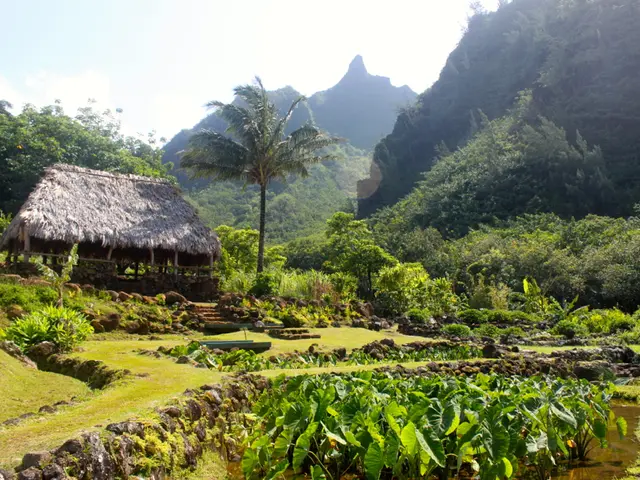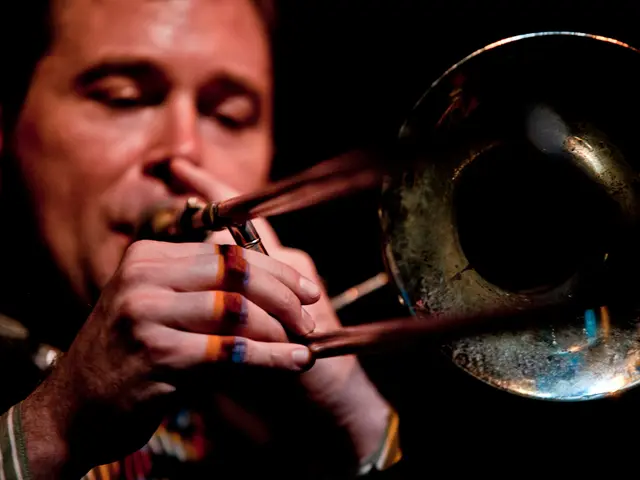Understanding Fire's Transformations: Crucial Role of Data in Evolving Perspectives
Revisiting Fire Stories: A Look Back at Our Platform's Past Reports
Australia's intricate relationship with fire can be complex. But data is helping us tame the flame. In this engaging piece, Bianca Nogrady explores the work of the researchers on the frontlines of this evolving phenomenon. Tracing the advancements in our understanding of fire's science, the data at our disposal, and the modifications in our approach to fire over the past decade, Nogrady probes crucial questions: What do we know about fire's science? What information do we have, and how has it transformed our strategies for dealing with fire?
To a firefighter, fire is a formidable, unpredictable force, resembling a beast decimating everything in its path. But amid this chaos, fire takes on a life-like quality. A home, built on land that has historically been swept by fire, views fire as destructive heat, flame, wind, and embers. Atmospheric temperatures can reach a searing 1,600°C, capable of melting common building materials like concrete, glass, and steel. These conditions, driven by wind, can generate embers that slip through the tiniest cracks in a house to ignite its underlying structure.
To a nation that has dramatically expanded over the past few centuries on the thin strip of habitable land between desert and ocean—once vibrant with forests, grasslands, and scrub but now teeming with communities, infrastructure, and industry—fire poses an immense threat. It disrupts countless aspects of life with smoke, chaos, panic, and costly loss of resources. Now, climate change—brought on by the combustion of fossil fuels—has intensified the fear around fire.
However, to an ancient gnarled banksia tree, fire is a catalyst for reproduction. Its warty branches hold ripe seed pods that open when exposed to heat and flame. The seeds fall onto a nutrient-rich ash bed, free of competition and perfectly equipped to thrive.
For tens of thousands of years, humans and ecosystems in Australia have learned to coexist with fire as a vital part of their environment. But with colonization and now climate change, this relationship has significantly shifted. As climate patterns shift with increasing temperatures, droughts, and prolonged bushfire seasons, researchers and experts are racing to comprehend the repercussions for all life forms on this unique continent. They aim to prepare and adapt effectively.
These responses must be rooted in data. To adapt, we need to comprehend how, when, where, and why fire ignites, impacts homes and infrastructure, endangers people, and harms ecosystems. Armed with this knowledge, we can adjust to this changing fire landscape.
Fire
A flame requires three vital elements: heat, fuel, and oxygen, known as the "fire triangle." But to fully grasp fire, scientists explore the 'fire behaviour triangle': topography, weather, and fuel. These factors govern whether a spark becomes a bushfire and, if so, its size, direction, and speed of travel.
Miguel Gomes Da Cruz, a bushfire behaviour scientist at CSIRO, explains the movement of bushfires: "My aim has always been about how we can better predict this movement, how the fire responds to wind, availability of fuels, and so on."
Topography is comparatively predictable, as it does not change rapidly. Fire moves faster uphill and at a significantly higher speed on steep slopes. Weather factors, including humidity, temperature, wind, and rainfall, are more complex but can still be forecast to a degree.
Fuel poses the greatest challenge since it varies greatly, is difficult to measure accurately, and changes frequently. However, fire science has made strides in understanding fuel. In the 1960s, CSIRO fire scientist Alan McArthur introduced the Forest Fire Danger Index, which forms the core of our current Australian Fire Danger Rating System. This system has been extensively revamped in the last decade, incorporating a broader range of fuel types and factoring in weather, fire history, potential impact on infrastructure, and suppressibility of fires in specific areas.
Cruz notes that while this new system represents substantial progress, there remains room for improvement in mapping the fuel loads across the land. A Western Sydney University initiative is currently working on creating a comprehensive digital map of Australia's vegetation, while research continues to examine how vegetation and its fuel potential are changing with climate change.
Fire Weather
Bushfires can generate extreme weather phenomena such as pyrocumulonimbus clouds. These clouds form when a fire releases a plume of smoke and heat that mixes with air and expands. As the plume rises, it experiences a drop in atmospheric pressure, allowing moisture to condense and create the pyrocumulus cloud. In some instances, this cloud reaches the cold upper troposphere and forms a pyrocumulonimbus cloud—a vortex of immense power.
In Australia, the focus of fire research leans toward understanding fuel, while in the United States, scientists consider the physics of fire more deeply. Regardless of the perspective, observational data is crucial in fire modelling.
Laboratories like CSIRO's National Bushfire Behaviour Research Laboratory in Canberra facilitate controlled fire experiments. The Pyrotron, a 29-meter long wind tunnel, and a 12-meter tall vertical wind tunnel enable scientists to study the effects of wind on fire and ember movement. However, these controlled conditions are far from realistic. As a result, researchers conduct wild fire experiments in locations across Australia, monitoring factors such as atmospheric conditions, fuel quality, and the movement and behavior of fires.
Humans
On February 7, 2009, the tragic Black Saturday bushfire claimed the lives of 173 people, making it the deadliest bushfire day in Australian history. Three years later, during the Black Summer, bushfires burnt across almost the entire spring and summer, impacting over 24 million hectares, destroying more than 3,000 buildings, incinerating over a billion animals, and claiming 33 lives.
These devastating events have prompted extensive research to understand how people died during bushfires and what measures can be taken to prevent such losses. A CSIRO study in 2012 examined century-old data regarding lives and property lost during bushfire incidents. The study revealed that 60% of people who perished in bushfires died within sight of their homes and that 80% were nearer than 500 meters from their homes. These findings underscored the need for a shift in advice to people during bushfires, emphasizing the importance of evacuation over the traditional "prepare, stay and defend" approach.
Recognizing that uncertainty can hinder quick decision-making in bushfire situations, fire authorities have introduced clearer and more direct messaging for emergency warnings. The new system emphasizes the urgency of leaving bushfire-prone areas when the conditions are potentially dangerous.
Ecosystems
For millennia, Australian plants and animals have evolved to adapt to and benefited from fire. Species like the banksia tree and even brown falcons depend on fire for reproduction and growth. Climate change, however, is altering the frequency, intensity, and distribution of fire in the ecosystem.
Researchers like Rachael Nolan are studying how climate change impacts fire regimes, monitoring their potential effects on ecosystems. Current findings indicate that various ecosystems are burning more frequently than they have previously, though at the expense of larger trees and the capacity of forests to store carbon. In response to these changes, Indigenous rangers, pastoralists, and scientists are employing 'cool burns' to manage the grasslands in Queensland and the Northern Territory, effectively containing larger fires and reducing their carbon emissions.
- The "fire triangle" is crucial for understanding a fire, but scientists delve into the "fire behavior triangle" to comprehend the factors that govern if a spark becomes a bushfire and its characteristics.
- Fire science has improved remarkably, with advancements like the introduction of the Forest Fire Danger Index in the 1960s by CSIRO fire scientist Alan McArthur. This index forms the core of Australia's current Fire Danger Rating System.
- Scientists are working on creating a comprehensive digital map of Australia's vegetation to aid fuel load mapping, a crucial aspect of fire science still needing improvement.
- Observational data is essential in fire modelling, with labs like CSIRO's National Bushfire Behaviour Research Laboratory conducting controlled fire experiments to better understand the effects of wind on fire and ember movement.







